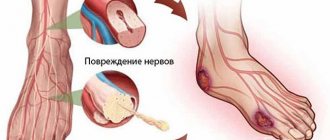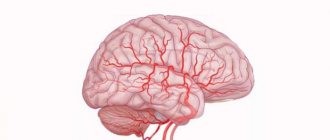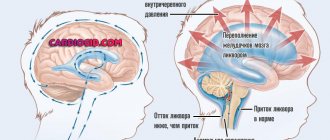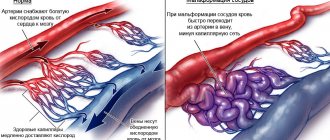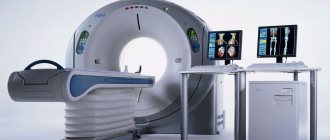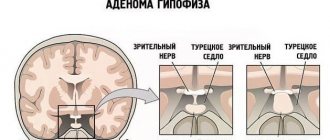Inflammation of the brain - symptoms
Initial symptoms of encephalitis may be nonspecific. Fever, chills, muscle and head pain, and general weakness may be the result of a common viral infection.
However, the appearance of nausea and vomiting, severe headache, drowsiness, disturbances of consciousness and neurological symptoms (paralysis, paresis) should be an alarm.
The intensity of symptoms quickly increases, and the general condition of the patient worsens. In extreme situations, breathing problems and cardiac arrest occur due to cerebral edema.
What does pain in the side, side, abdomen and chest mean this pneumonia?
Pain in the side and pneumonia indicates the localization of the stretched process in the lower lobe and therefore damage to the pleura. Pneumonia involves the pleural lungs in the process, characterized by an abundance of nerves and blood vessels; the patient then complains of chest pain, pain radiating to the back and abdomen.
After the sensation can imitate the disease of an acute abdomen, a troubling attack, or even an acute unpleasant myocardium.
To differentiate from human diseases, it should be remembered that the distinctive feature of pain in pneumonia is its connection with the act of breathing and sensation when palpating the chest. The patient will also have reasons for the clinical manifestations of this concern (cough, shortness of breath, fever).
Causes of brain inflammation
The most common cause of brain inflammation is infection with the tick-borne encephalitis virus. The disease is transmitted not only through tick bites, but also through consumption of untreated milk from infected animals (for example, cows).
Other viral inflammations of the brain are caused mainly by herpes viruses, rubella, cytomegalovirus, and measles. A specific case is rabies, which in the absence of timely treatment always ends in the death of the patient.
Bacterial encephalitis is most often caused by meningococci and pneumococci . Less common are other bacterial infections, among which it should be noted (due to specific treatment) borreliosis and - today rare - tuberculosis.
Viral and bacterial infections are relatively common in Russia. In countries where there are no sources of clean drinking water and low levels of hygiene, a common cause of brain inflammation is protozoal infections (amoebas and toxoplasma) or parasites ( ascaris and tapeworm larvae ).
Inflammation of the brain may be a consequence of the body's protective reaction. Isolated cases of this type of inflammation relate mainly to young women with ovarian tumors. When fighting cancer cells, the body produces antibodies, which also attack nerve cells and cause diseases of the peripheral nervous system.
Very rarely there are cases of brain inflammation in acute sclerosis (demyelinating disease occurs in children, mainly due to infection).
Bee products for neuritis of the sciatic nerve
Consult your doctor - maybe he will approve folk remedies against neuritis of the sciatic nerve. If there are no contraindications, use medicinal beekeeping products. Here is one of the popular recipes: melt ten grams of crushed propolis in a water bath, mix the viscous mass with butter, keep on fire for fifteen minutes, filter the finished 10% propolis oil through cheesecloth.
Melt the wax separately. Lubricate the sore lower back with warm oil with propolis, then apply a hot wax layer. Cover everything with a wool blanket or film. Keep the compress until it cools completely. Please note that such thermal procedures should always be carried out under the supervision of a doctor.
Treatment of brain inflammation
Inflammation of the brain requires specialized inpatient treatment, under conditions typical of an infectious diseases department. The basis is to protect the patient from cerebral edema, which not only causes severe disorders of consciousness, but can lead to invagination of the brain into the opening of the skull. As a result, compression of the respiratory and circulatory regulating centers , which can lead to cardiopulmonary failure and death.
The condition of brain tissue, the extent and intensity of changes is determined by imaging methods - mainly using magnetic resonance (NMR). Treatment uses, in particular, intravenous administration of osmotically active substances (mannitol), diuretics, and steroidal anti-inflammatory drugs.
By examining the cerebrospinal fluid for the presence of bacteria, viruses and the presence of specific antibodies, the cause of the disease can often be determined. This allows for causal treatment (eg antibiotics) to be implemented where warranted.
Despite the fact that a few percent of cases of brain inflammation end in death, most people can be cured. However, recovery may be marred by adverse neurological consequences of varying severity. But, thanks to several months of intensive rehabilitation, at least a partial improvement in general condition and a reduction in paresis or other problems of the central nervous system are usually achieved.
Diagnostics
To determine the presence of neuritis, a neurological examination and testing of nerve function using reflexes and testing motor functions, if possible, is performed.
To determine the extent of damage, instrumental examination methods are used:
- Electroneurography is a study of the speed of impulse transmission along a fiber and its conductivity. Allows you to determine the extent and area of damage.
- Electromyography – examines the boelectric activity of muscles and checks the functional state of neurons.
- Evoked potentials are a method similar to electroneuronography, but for deep nerves, such as the optic and auditory, where they are affected by sound or image and the conductivity is recorded by the activity of the corresponding parts of the brain.
- Ultrasound, X-ray, MRI or CT are diagnostic methods designed to identify the physical cause of damage to the nerve and its endings and prescribe the necessary treatment, rather than the disorder itself.
If an infection is suspected, laboratory tests of blood and other tissues are performed, including a biopsy in extreme cases.
Symptoms of brain inflammation, causes and treatment
Inflammation of the brain is a very serious pathology, which without proper and timely treatment can lead to death. Depending on the location of the inflammatory process, three types of lesions are distinguished: encephalitis, meningitis and meningoencephalitis. According to statistics, children under five years of age, as well as middle-aged men, are more likely to suffer from these diseases. The risk of pathologies increases during the cold season, which is caused by sharp drops and temperature fluctuations. On average, the pathological process occurs in ten people per hundred thousand of the population.
One of the subgroups of brain inflammation is meningitis, which affects the membranes of the brain. The disease can be caused by viruses, fungi or bacteria. Pathology has an extensive classification; according to the nature of the disease, purulent and serous meningitis are distinguished. The pathology can be primary, when inflammation arose directly in the lining of the brain, and secondary, in this case the process moved to the cerebral cortex as a result of insufficient treatment of infectious diseases, for example, purulent otitis media.
According to the type of disease, there are three stages:
- acute;
- subacute;
- chronic.
How to properly treat nerve inflammation with folk remedies at home?
As a rule, neuralgia occurs due to hypothermia, infectious diseases, allergies or poisoning with drugs and other chemicals. If nerve inflammation is left untreated, it can become a chronic disease, making it much more difficult to get rid of. Therefore, it is better to immediately resort to some folk remedies.
Effective ways to cure nerve inflammation at home
As a home folk treatment and maintenance therapy, a light diet that is not rich in meat products is used. To separate mucus and get rid of toxic substances, your daily diet should include plenty of raw vegetables. It is also useful to undergo a fast or juice treatment. The main principles of treatment are:
Supporting the activity of the intestines and kidneys in the form of diuretic teas, as well as the skin with the help of a sauna.
The use of tea in the treatment of inflammation of the nerves, for example, from ordinary fennel, medicinal valerian, medicinal meadowsweet, black elderberry, yarrow, St. John's wort.
In case of acute inflammation of the nerves, heat therapy in the form of hot baths with the addition of sulfur, warm compresses, and warm foot baths will help. A visit to the sauna will also help.
In case of chronic inflammation of the nerve, on the contrary, cold treatment should be used. Apply heating pads with ice, cold compresses, alternating compresses to the sore area, and take a contrast shower. However, be careful to avoid hypothermia. In addition, vibration massage helps in case of chronic inflammation.
Grind four heads of garlic, place in a mug and fill it halfway with water. After this, place a funnel on the mug and place on low heat. As the water begins to boil, inhale through each nostril in turn for 5-10 minutes.
A glass of buckwheat is heated in a frying pan, poured into a cotton bag and applied to the sore spot. Keep it there until the bag has cooled completely. This folk remedy for inflammation of the nerves must be used twice a day.
Clinical picture ↑
All symptoms of meningitis are divided into three groups:
- meningeal;
- infectious;
- general cerebral.
Infectious symptoms include:
- a sharp increase in body temperature, accompanied by chills and fever;
- earthy skin tone with blue discoloration in the area of the nasolabial triangle;
- tachycardia and increased sweating;
- weakness and increased anxiety.
Depending on the form of the disease, symptoms can appear at lightning speed, within a few hours due to swelling of the brain and be accompanied by convulsions and confusion. A similar picture can be observed with the primary form of meningitis. The secondary form develops less rapidly, and the symptoms are intertwined with the manifestations of the primary pathology.
General cerebral signs include:
- very intense headache, often localized in the forehead and temples;
- fear of light and sharp sounds;
- vomiting, especially frequent when changing the position of the head, it is not associated with food intake, intense, sudden, and is not preceded by nausea;
- discomfort when touching the patient’s skin;
- disorders in joint mobility.
Meningeal symptoms are as follows:
- increased tone of the neck muscles;
- Kernig's sign;
- increased intracranial pressure;
- acute hydrocephalus.
Examination of cerebrospinal fluid helps to accurately establish the diagnosis. The results of a puncture of this fluid show a complete picture of what is happening, the form of the disease, the degree of its course, the intensity of inflammation, etc.
Most often, the disease develops as a result of infection by viruses or bacteria, less often by fungi, or due to injuries and hypothermia. The most common bacteria that can provoke an inflammatory process are meningococci, streptococci, salmonella, pneumococci, hemophilus influenzae, and staphylococci. Of the fungi, candidiasis most often affects others.
Pathologies that can lead to secondary purulent meningitis:
- sinusitis, sinusitis;
- abscesses of different localization;
- otitis;
- fistulas;
- pneumonia;
- conjunctivitis;
- furunculosis.
Serous meningitis can be caused by: chickenpox, measles, mumps, mumps, rubella.
Prevention
To prevent the development of occipital neuritis, it is very important to lead a healthy lifestyle. Correct distribution of loads is of great importance. Hypothermia and traumatic injuries should be avoided.
If you have to do monotonous work, it is important to properly organize your work and rest schedule. During your activities, you need to periodically warm up.
Quite often, neuritis becomes a complication of influenza, which is why it is so important to treat this disease correctly. An equally important preventive measure is the organization of a diet. It is recommended to pay special attention to the consumption of foods with B vitamins.
Neuritis of the occipital nerve is accompanied by severe pain, which significantly worsens a person’s quality of life. If this disorder is not treated promptly, it can lead to negative health consequences. To prevent this from happening, the very first signs of the disease should be a signal for a visit to a specialist.
Quite a lot has been written about this. After all, inflammation of the nerve occurs quite often and is accompanied by quite unpleasant sensations. How to be treated with herbal medicine, read further in the article.
Complications of meningitis ↑
The duration of the disease depends on its form and timeliness of treatment. If we do not consider the lightning-fast form, when symptoms increase over several hours, on average, treatment of the pathology lasts from two weeks to one and a half months. In the chronic form, relapses often occur, and therapy can be protracted.
Meningitis is fraught with many dangers; even after treatment is completed, various complications often occur, these include:
- hearing or vision loss;
- development of mental retardation;
- epilepsy attacks;
- strabismus;
- paralysis of limbs;
- development of renal or liver failure;
- additional stress on the work of the heart and lungs.
Consequences
If treatment for neuritis is not started in a timely manner, the pain will gradually increase. In addition, this pathology can provoke complete destruction of the occipital nerve.
In addition to severe pain, you can get quite serious complications. For example, neuritis of the occipital nerve can cause complete loss of vision.
With the development of constant pain, the soft tissues adjacent to the nerve become extremely sensitive. This entails a curvature of the neck.
Coping with this condition can be quite difficult. If this fails, the person faces disability.
Clinical picture ↑
The leading symptoms of encephalitis include:
- fever with high temperature;
- severe headaches;
- vomit;
- muscle and joint pain;
- swelling of the respiratory tract, cough;
- increased intracranial pressure;
- bradycardia;
- mental disorders, hallucinations;
- anxiety, sleep disturbance or, conversely, increased drowsiness;
- hyperemia of the optic fibers.
Viruses such as herpes, influenza, Coxsackie and others can provoke the development of pathology. The disease can also be caused by bites of infected insects, such as ticks or mosquitoes.
Secondary types can be caused by:
- measles;
- malaria;
- rubella;
- toxoplasmosis;
- smallpox;
- complications after vaccination.
The virus can be transmitted by airborne droplets, and also through insect bites, moving through the bloodstream and entering the brain.
Regardless of the severity of the pathology, the patient is hospitalized in the neuroinfectious department, where a complex of all necessary procedures is carried out. Diuretics and glucocorticosteroids are prescribed to relieve cerebral edema. The basis of treatment is etiotropic therapy. Gamma globulin is the main drug that has a pronounced therapeutic effect; it is administered intravenously for three days. Additionally, antiviral drugs are prescribed, for example, cytosine arabinosis, which delays the replication of the virus. To relieve symptoms, antipyretics, sedatives, and anticonvulsants are used. To prevent bacterial complications, broad-spectrum antibiotics are prescribed.
Important! Meningitis and encephalitis are serious pathological processes that require constant monitoring by medical personnel. It is strictly forbidden to self-medicate; all medications must be selected only by a specialist.
Despite the fact that inflammatory processes in the brain are a fairly rare pathology, they still occur and, unfortunately, take people’s lives due to untimely treatment and neglect of their health. Any disease is curable at the first stage; remember that attempts to relieve the symptoms of the disease on your own will only worsen the situation. Seek help on time, be healthy!
What to do if you have pneumonia?
- Are you suffering from a sore throat and dry cough?
- Do you feel pain in your chest with every breath?
- And also this shortness of breath, malaise and headache...
Naturally, deciding on a diagnosis in this case is extremely important for the reason that emergency care and further treatment are fundamentally different.
If a patient with acute coronary syndrome is started on antibiotic therapy indicated for pneumonia, there is a high probability of death. Exactly the same and vice versa. Untimely or incorrectly started treatment with antibiotics can significantly worsen the prognosis for recovery from pneumonia. Untimely medical care for a patient with pneumothorax may well cause the patient’s death, and in this case, in a very short time.
But your head will help you immediately understand your body about this disease. After all, many diseases, including pneumonia and headaches, are interconnected by necessary impulses.
Considering the weakening of the body by the disease, as well as the negative impact of medications, many do not pay enough attention to restoring the body after pneumonia. Not many means have been developed to prevent this disease: UHF, microwave, electrophoresis of sodium chlorine and potassium iodide, inductothermy and, of course, massage.
Such therapeutic manipulations must be carried out for 10 minutes a day. In this case, the patient should not experience discomfort or unpleasant sensations during acupressure massage. It remains only to remember that some pathological conditions are contraindications for massage:
- any neoplasms (benign or malignant);
- acute febrile conditions;
- duodenal ulcer or stomach ulcer;
- active forms of tuberculosis;
- blood diseases;
- state of pregnancy.
It is better, of course, to avoid such a disease, but if it does happen, then proper treatment and preventive methods using Tibetan acupressure will quickly help you.
Don't get sick and be healthy!
- Are you suffering from tickling pain and a dry cough?
- Do you feel pain in the lower cells when you inhale?
- And this can also be malaise and headache...
- For some reason, the recommended medications are not for pneumonia in your case...
- And now you have the right to take advantage of any opportunity...
I'm worried there is a cure for pneumonia. Follow the link and find out what Elena Malysheva thinks about it...
Characteristics and causes of pathology
The concept includes a number of inflammatory diseases of the brain. Inflammation of the brain develops as a result of the penetration of a pathogen into the human body or as a result of allergic phenomena. The main reason for the development of the disease is neuroinfection.
Microbes and viruses interfere with the activity of nerve fibers, neurons and blood vessels, negatively affecting the functioning of the nervous system. Signs of intoxication appear, the membrane and certain areas of the brain are affected.
Depending on the affected area, meningitis and encephalitis are distinguished. Meningitis is accompanied by inflammation of the cerebral cortex, which develops as a result of hypothermia, the penetration of fungi, viruses, and bacteria. Encephalitis is a serious condition in which the brain becomes inflamed. The disease is characterized by severe course and high mortality.
Encephalitis can be primary or secondary. The source of infection in the primary form is usually insects. An infected individual bites a person, then the virus spreads through the bloodstream to the brain and other organs. This form manifests itself as a result of the rabies virus (from the bite of an infected dog), herpes, influenza, and Coxsackie. Microbial encephalitis is formed as a result, for example, of syphilis.
Based on the causes of the primary form of the disease, epidemic, tick-borne, herpetic, mosquito, and viral encephalitis are distinguished.
DTP vaccination, smallpox and rabies vaccines can cause the development of encephalitis.
Since vaccination can cause brain pathology in infants, a thorough examination of newborns by a pediatrician and neurologist is necessary.
Secondary encephalitis forms as a complication of another disease: toxoplasmosis, malaria, measles, rubella. You can become infected through airborne droplets or through consumption of contaminated food.
Risk factors
There are several factors that increase the risk of pathology:
- children under 1 year of age, elderly people;
- presence of herpes simplex virus;
- decreased immune status;
- summer-autumn period, when insect carriers of neuroinfection are most active.
Based on the location of the pathogen, subcortical, cerebellar, mesencephalic, and brainstem encephalitis are distinguished.
Anticonvulsants
Drugs with an anticonvulsant effect eliminate the symptoms of inflammation of the trigeminal nerve. Carbamazepine, Gabapentin, Clonazepam, by inhibiting the transmission of pathological impulses in nerve endings, help reduce the number of pain attacks that occur. Anticonvulsant medications are prescribed only by a doctor, individually selecting the dose, frequency and duration of use of the drug.
Carbamazepine, Clonazepam and Gabapentin act gradually. The course of therapy can take from several months to six months. With the help of anticonvulsants, it is possible to successfully treat inflammation of the trigeminal nerve and achieve partial or complete elimination of the symptoms of the disease.
Types of disease
Each type of pathology is characterized by certain signs and a special course of the pathological process.
Epidemic
Another name is lethargic. Diagnosed in both children and adults. Symptoms manifest themselves in a sharp increase in temperature, intense headaches, and pain in the joint tissue.
The patient experiences confusion, delusions, and hallucinations. Later, squint, difficulty breathing, and excessive sweating are added.
The frequency of detection of this species increases in spring and summer, when infected ticks are most active. The causative agent of the disease is transmitted through the bite of an encephalitis tick.
Once ingested, the infection enters the brain through the bloodstream. The person begins to be afraid of bright light, pain in the head increases, and vomiting develops. Numbness of the limbs occurs, muscle structures are paralyzed.
Another name for the species is Japanese. Infected mosquitoes transmit the virus. The disease is accompanied by high body temperature, vomiting, and confusion. Tremors of the limbs and convulsive seizures are recorded. The species is characterized by a high mortality rate.
Flu-like
Develops as a complication of influenza. Manifested by nausea, headache, weight loss, weakness. The disease often puts the victim in a comatose state.
Since measles is a childhood disease, this type of encephalitis is characteristic of children. Inflammation of the brain begins to develop several days after measles.
The patient becomes weaker, develops a feverish state, and suffers from epileptic attacks. The disease damages the nerves of the skull, causing paralysis and myelitis.
Throat
Pneumonia can in many cases be caused by microorganisms in the nose or throat. For example, with severe sore throat, the immune system is weakened, the virus penetrates the lungs and leads to inflammation.
It may be the other way around - pneumonia weakens the body and a sore throat is added to lung disease. A sore throat caused by pneumonia is extremely severe and requires additional treatment with antibiotics.
In any case, if a prolonged sore throat leads to a deterioration in your general condition, accompanied by a severe cough, high fever, and back pain, you should immediately call a doctor at home.
Attention! Two serious diseases together - sore throat and pneumonia often lead to
severe consequences
.



